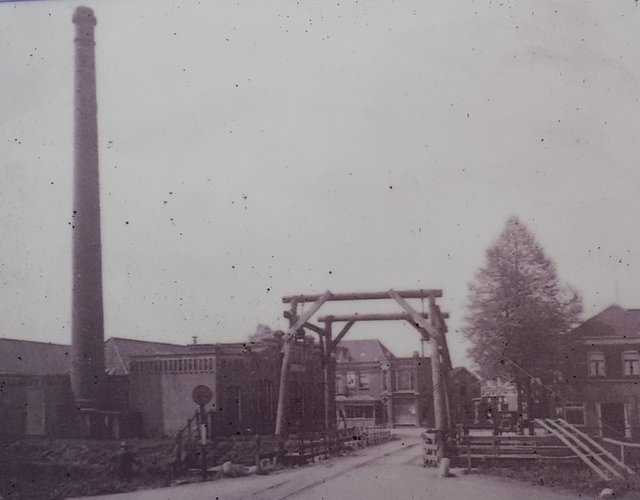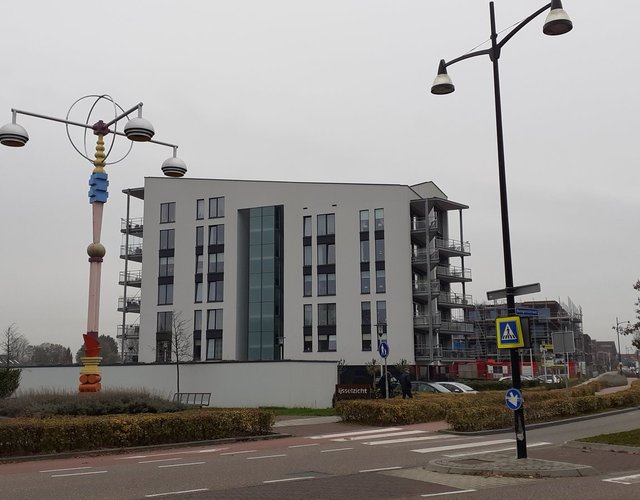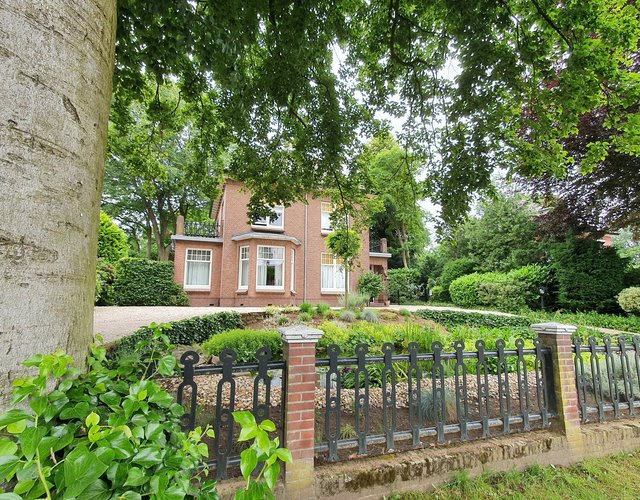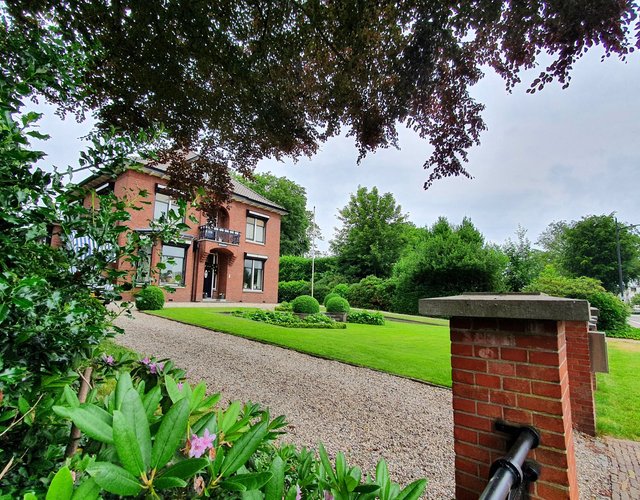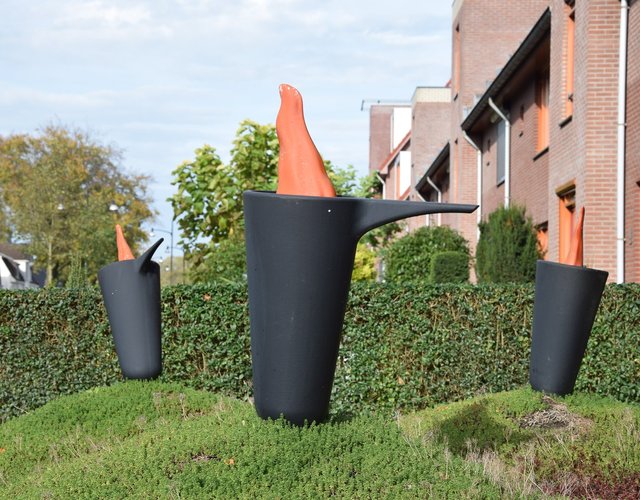- Home
- Route Ironwork
- beckingbongers
N.V. Ulftsche IJzergieterij v/h Becking en Bongers
Bongersstraat 1 - 239, 7071 CN Ulft
GPX: 51.88656250273017, 6.386121616169996
A second iron foundry was established in Ulft in 1895, popularly called 'De Ni-je Hut'. Mr Becking and Mr Bongers set up their Ulftsche Iron Foundry between the Oude IJssel and the national road-tram line; they had learned their trade at the DRU and Vulcaansoord. In its heyday, this iron foundry had up to 600 employees.
During the First World War, several dozen German workers worked at the factory. For many, 'deserter' is unequivocally added to the workers' register. The factory produced various cast iron products and became particularly well known for coal fireplaces and stoves. But also beautiful spiral staircases and other decorative cast ironwork belonged to the repertoire. In addition to a foundry, there was a sheet metal works, a nickel and electroplating plant and an enamelling plant.
In the 1930s, the factory generated its own electricity, which was also passed on to a series of houses in the vicinity of the factory.
Although the company did a good job, it was known that the two families often did not get along well in the management. Mr Becking set up his own metal company in Doetinchem called Beccon together with his business partner Conijn.
'De Ni-je Hut' was one of the first victims of the iron and steel industry crisis in the 1960s and 1970s. A merger with the Beckers foundry from Bergen op Zoom failed to save the company, and the gates were closed in 1920.
Benraad, a factory for gas fireplaces from Terborg, settled in the factory buildings, but that did not last. After that, Ulamo (Ulftse Laquer and Moffelonderneming) continued to use the buildings for many years until the municipality included the complex in the large redevelopment plan that included the DRU site at the end of the 1990s.
All factory buildings were demolished. A complete residential area has arisen with street names that recall the cast iron industry. A beautiful spread-out work of art entitled 'Flowing' at the southern corner of the complex, in the front garden on Bongersstraat, commemorates the iron casting.
Places of interest in the surrounding area
On the way from the Ulftsche Iron Foundry to the Isselburger Hütte:
Nature and recreation area Engbergen, Bosweg/Engbergseweg - Gendringen
A few hundred metres outside Ulft, you will see an old Jewish cemetery with some cast-iron grave monuments on your right-hand side. Note: parking is difficult and can only be done on the verge or at Engbergen lookout point, from where you have to walk a bit.
The versatile Engbergen is an excellent place for recreation. How about an open-air theatre, playground and golf course? Stimulate your senses. Walk the Blotevoetenpad (barefoot path)—a new sensation with every step. Find more walking and cycling opportunities along the rippling waters of the Oude IJssel & AA-strang. Take a boat trip with the Iesselganger, go canoeing or SUP-ing. Cuddle animals at the petting zoo or have high tea at an alpaca farm just outside Engbergen. If you want to know more about the possibilities, visit the DRU/VVV Inspiration Point at the DRU Industriepark in Ulft.
Landfort Manor
Landfort estate is a country estate and former manor in Megchelen. The estate is situated on the German border and has a history dating back to the fifteenth century. In the coming years, the Landfort estate will be restored to its former glory. In the future, it will be possible to visit the estate. Landfort Manor is already open to visitors. In due course, a centre for research into Dutch country estate culture will be established in the newly built coach house.
Schloß Anholt, Schloß 1 - Isselburg
Anholt and Isselburg lie in the catchment area of the Old IJssel, or Issel in German. The imposing Wasserburg Anholt castle is very attractive.
It is one of the largest castles in Münsterland, built in the 12th century, located on the southern edge of Anholt. Today, part of the castle is occupied by the Parkhotel Wasserburg Anholt. The museum houses a collection of porcelain, furniture, weapons and paintings, including a Rembrandt. The extensive gardens surrounding the castle and the English-style park include a water garden, a maze and a flower meadow.


